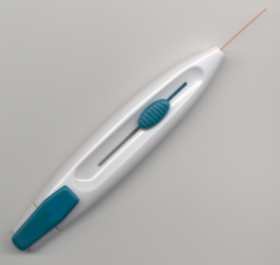I've been sifting through the document to find out exactly what's in it. Ultimately, it’s a suggestion for a plan. But! There is a lot in it!
As a place to start improving services for families with type 1 diabetes it’s a good one. It actually calls for the service to be completely redesigned! Thumbs up from me:-D
Professor Hillary Hoey, chairperson of Diabetes Ireland stated that “Overall, it is a good day for the paediatric Type 1 diabetes community. This model of care provides a strong platform on which to build a high quality service. We now need to see implementation of the care model by the HSE as soon as possible”.
Firstly, this document is limited to children and young people under the age of 18 with type 1 diabetes. And not 16 years as it was under as is the current unofficial national policy. (thumbs up again!)
The Proposed Structure of the Model of Care.
Here are the Key Recommendations for Implementation of this Model of Care:
- Services should be organised within Integrated Practice Units (IPUs) comprising of a Centre of Reference (CofR) and a number of additional units.
- It is recommended that a IPU/centre of reference will have between 150 and 300 patients.
- IPUs should be equipped with the core staffing requirements. Staffing recommendations for the IPU can be determined on a pro rata basis from the following:
- A reduction in general paediatric workload may be required for the lead paediatric endocrinologist in each IPU.
- Adequate staffing should facilitate the availability of 24-hour telephone support within each IPU.
- Each IPU will need to develop governance arrangements which cross current geographic boundaries.
- In order to facilitate these activities (Page 30), commissioners would need to commission jointly an appropriate IPU infrastructure, which might include:
- The Additional units will support the delivery of services locally, acting under the ‘umbrella’ of the IPU.
- It is recommended that a local units have less than 150 patients attending and will be linked to a larger centre of reference for provision of more complex care.
- Ongoing training and structured education of paediatric diabetes teams is required annually.
- National, quality assured, educational programmes for children with type 1 diabetes and their families and carers should be developed.
- Ongoing patient and parental engagement is required, for example with links with Diabetes Ireland.
- Appropriate national information and communication technology infrastructure and support is needed.
- Accurate baseline data is required in the form of an active electronic database for longitudinal data, this will allow ongoing audit and appropriate service development. A financial incentive has been suggested for each IPU, CofR and Unit to achieve their standards.
The Proposed Service for Families with type 1 Diabetes.
STRUCTURE EDUCATION.
Education programmes should be available to the child, their family and ideally staff members from the child’s school. Examples of educational programmes would include carbohydrate counting and structured pump schools, e.g. FABB, CHOICE. (page 24)
BASIC EDUCATION IS ESSENTIAL AT DIAGNOSIS.
Once basic skills are mastered, a more intensive educational programme can be initiated based on the families stage of engagement
Refresher Education periodically
The structured education programmes to be used by multidisciplinary teams to optimise diabetes education, carbohydrate counting and insulin pump initiation.
HBA1C RECOMMENDATIONS:
All children and young people is <7.5% (59 mmol/l) (ADA, 2014). (page 26) Define the goals to be achieved for HbA1c in different age groups.
ANNUAL REVIEW & REGULARITY OF CLINIC VISITS.
Recommended follow up clinic visits are three to four monthly in a dedicated paediatric diabetes outpatient clinic. All children with type 1 diabetes should have an annual review when a child is diagnosed with T1DM for greater than five years or the child is older than 12 years of age (ISPAD & ADA). An annual review should consist of eyes, feet and cardiovascular review along with routine annual bloods for thyroid, coeliac and fasting lipids. (Page 26)
PEER SUPPORT.
From initial diagnosis of diabetes, children and their families should be encouraged to link with patient groups such as Diabetes Ireland. These groups are helpful for children and families in the initial stages of diagnosis when they need peer support.
ACCESS TO PSYCHOLOGIST/SOCIAL WORKER;
The involvement of a psychologist with any diabetes service is universally recommended, and screening for psychological morbidity at diagnosis has also been recently suggested. Therefore, dedicated access to a psychologist and a social worker for each IPU is recommended. (Page 28)
What Next; Action.
This document calls for the a complete redesign of the service and for all the stakeholders to start discussions and consultations with each other. A lot of what the model of care is calling for is already in place in some paediatric diabetes clinics so I would like to think it is NOT going to take the 5 - 10 years that is expected to implement.
“Diabetes Ireland is calling on the various HSE regional managers to prioritise implementation of the IPU’s and provide the necessary resources (financial and human) as a matter of urgency. We will of course be engaging with the HSE to deliver this, at a local and national level” added Professor Hoey
Diabetes Ireland have an action plan for national level activity but, and this is just my opinion, we have a part to play in this too. What if, every family, at their next clinic appointment, asks every member of their child’s team what their clinic is doing to get “Model of Care” ready, it will ensure that they know we have expectations and that our patience has limits.
It may even speed up the implementation if we are applying pressure from the ground?




